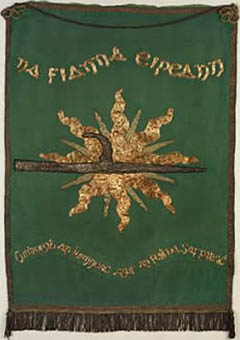Brief History of Ireland
In 1801, the Irish Parliament was abolished and Ireland became an integral part of a new United Kingdom of Great Britain and Ireland under the Act of Union. The Irish Parliamentary Party strove from the 1880s to attain Home Rule self-government through the parliamentary constitutional movement eventually winning the Home Rule Act 1914, though it was suspended on the outbreak of World War I. In 1922, after the Irish War of Independence and the Anglo-Irish Treaty, the larger part of Ireland seceded from the United Kingdom (UK) to become the independent Irish Free State; and after 1948 the Republic of Ireland. The six north eastern counties, known as Northern Ireland, remained within the United Kingdom. The Irish Civil War followed. The history of Northern Ireland has since been dominated by sporadic sectarian conflict between (mainly Catholic) Nationalists and (mainly Protestant) Unionists. This conflict erupted into the Troubles in the late 1960s, until an uneasy peace thirty years later.
Irish Treasurers
The An Gal Gréine, (Sunburst) banner of Na Fianna Éireann - Na Fianna Eireann, which was the republican youth movement, was founded on August 16, 1909, in a hall on Dublin's Camden Street. A committee that included Constance Markievicz and Bulmer Hobson called the meeting to recruit boys to a new nationalist body. Na FIANNA ÉIREANN was founded with the object of educating the youth of Ireland in national ideas and re-establishing the independence of the nation. Its proclamation in 1914 stated it was the organisation's aim "to train the boys of Ireland to fight Ireland's battle when they are men".
|
 |